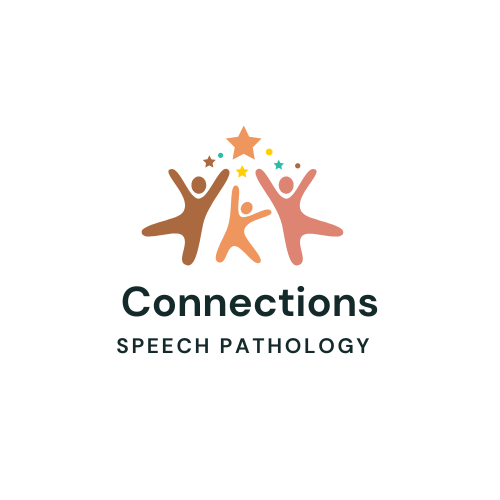Play-Based Speech Therapy: A Parent’s Perspective
At Connections Speech Pathology, we pride ourselves on the relationships we form with the children and families we serve. We spend our time truly getting to know your child so that we can tailor a therapeutic plan that builds on their strengths and interests. Our approach is simple: connection over compliance. But what does this mean?
In today’s post, our (amazing) office manager Allison shares her experiences navigating the therapy world with her (amazing) three-year-old, autistic son, Michael, and how a child-led, strengths based approach changed the trajectory of their journey.
--
Connection vs. compliance. This topic really hits home for me, as the mom of a three-year-old autistic son, Michael. We have been a “therapy family” for 16 months now. We are still learning, still growing, and finding our groove, but I hope that by sharing our story, other families can learn the power of a connections-based approach for their child’s therapy services.
When I think of those early days of therapy with Michael- I remember tears. Lots of tears. From him and from me. I remember about 6 months into Michael’s therapy services, I had to work during one of his appointments, so my husband went. After the session, my husband texted me and said, “I can never do this again. That was torture- for him and for me.”
Looking back now, I realize that the services Michael received in those early days were highly compliance based. Our sessions looked like Michael having to remain in a certain place, for a designated amount of time, doing adult directed activities in order to be rewarded. When he couldn’t or wouldn’t do these things, we felt like we were failing. Maybe you’ve had a similar feeling or experience.
If your child is anything like mine, they need MOVEMENT to learn. They need SPACE to learn. They need TRUST to learn. They need PEACE to learn. These basic needs were not being honored in those early days, because the goal was ultimately compliance. The providers would arrive, and within ten minutes, Michael would be completely dysregulated and melting down, which looked like him banging his head, running away, crying, and giving up.
I am here to tell you that there is a better way. Finding a team of providers who value connection over compliance, affirm neurodiversity, and take a child-led, strengths-based approach can change the course of your child’s communication development.
So, what has connection-based speech therapy looked like for Michael?
TRUST. Completely child-led. It looks like therapists who meet Michael where he is. If he wants to play with colors for the thousandth time this session- they’re on the floor with his colors being silly, exciting, and engaging. If Michael wants to play with trucks that day- they’re on the floor with him playing with trucks, building language through his interests. Some days, Michael needs more space. It doesn’t mean it is a failed session- because our therapists know that Michael is always listening, hearing everything, even if he would prefer to play across the room. They give him time, and space, and continue to model language from a little further away. And guess what! Most of the time, Michael will eventually choose to engage, when he’s ready.
SENSORY INTEGRATION. A therapist who understands sensory processing disorder and can offer the sensory input Michael needs in order to feel regulated and ready to learn. This has made all the difference for my son. Our speech therapist came into our house, and upon request, started to squeeze Michael’s feet. Weird right? NO- not at all. She knew that he needed the deep pressure, and within minutes, Michael began singing songs, and smiling at her. All because she took the time to connect with him through sensory support. Sensory does not mean forcing Michael to touch and play with textures that he is uncomfortable with. For us, it usually means our speech therapy sessions are filled with lots of swinging, parachutes, running, jumping on the bed, and games of chase, where we all end up laughing and filled with joy.
FUN. Never in a million years did I think that therapy sessions could actually be fun. In the beginning, I thought it would always be gut-wrenching until he “grew out of it.” But, these days, I know that is not the case. The laughter, silliness, excitement, and smiles- oh, the SMILES-that I witness through our connection-based therapy is one of the best parts as a parent. It has shown us a way to break through to our son and continue to grow as a family.
If your child is autistic or has other complex communication needs, I highly recommend seeking a speech therapy provider who follows a connection over compliance, strengths-based, child-led approach. In the past six months, we have seen a huge turn around in Michael’s communication development. In the beginning, our sessions lasted 5-10 minutes before resulting in a huge meltdown. Now, Michael plays, laughs, and talks with his therapist for an entire hour. The trust we have in our therapist, who sees and celebrates all of Michael’s strengths, has helped us all to make progress toward our goals.
With these types of people on our team, we just know Michael will move mountains.

